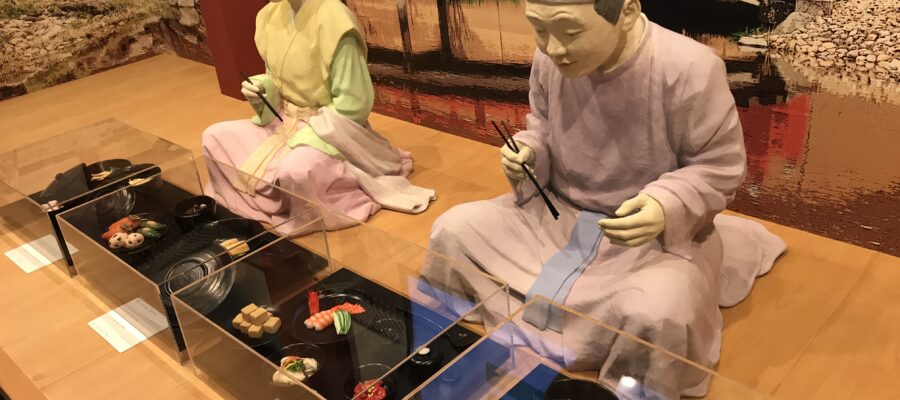豊富な展示を無料で見られる
平城宮跡に行きますと、必ずこの平城宮資料館へ海外からの研修生を案内します。ありがたいことに無償ですので、コースに組み入れやすく、古代日本の歴史や文化を豊富な展示品を使って説明することができます。外国語の資料もありますので、通訳ガイドにとっては使いやすい施設です。
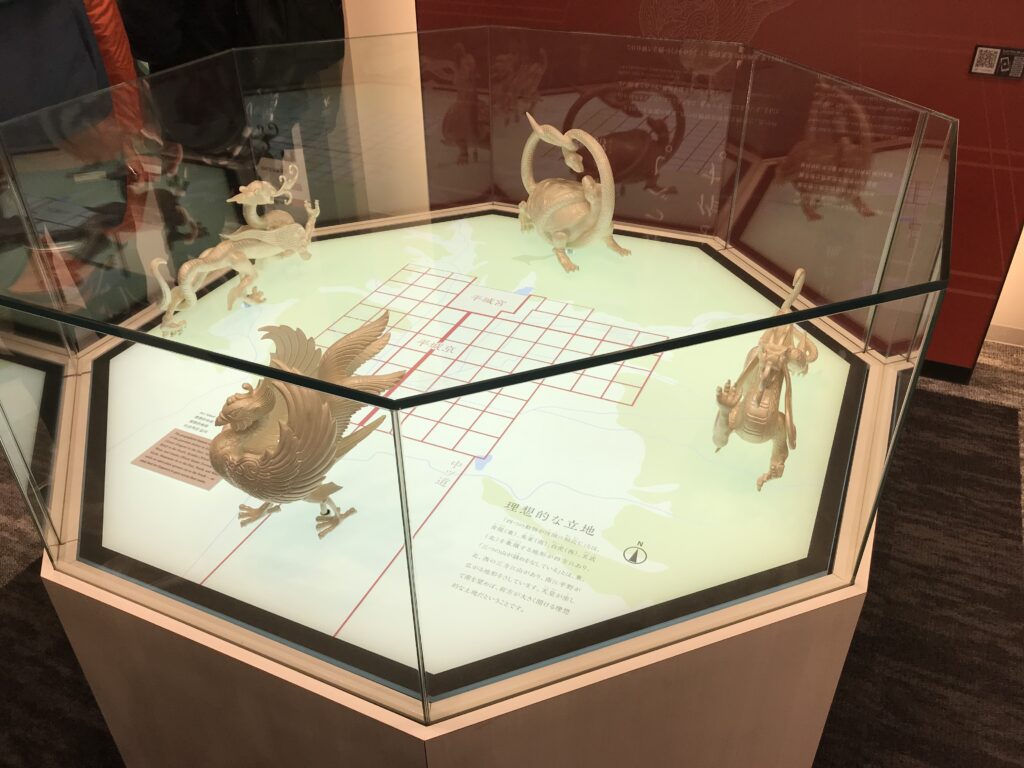
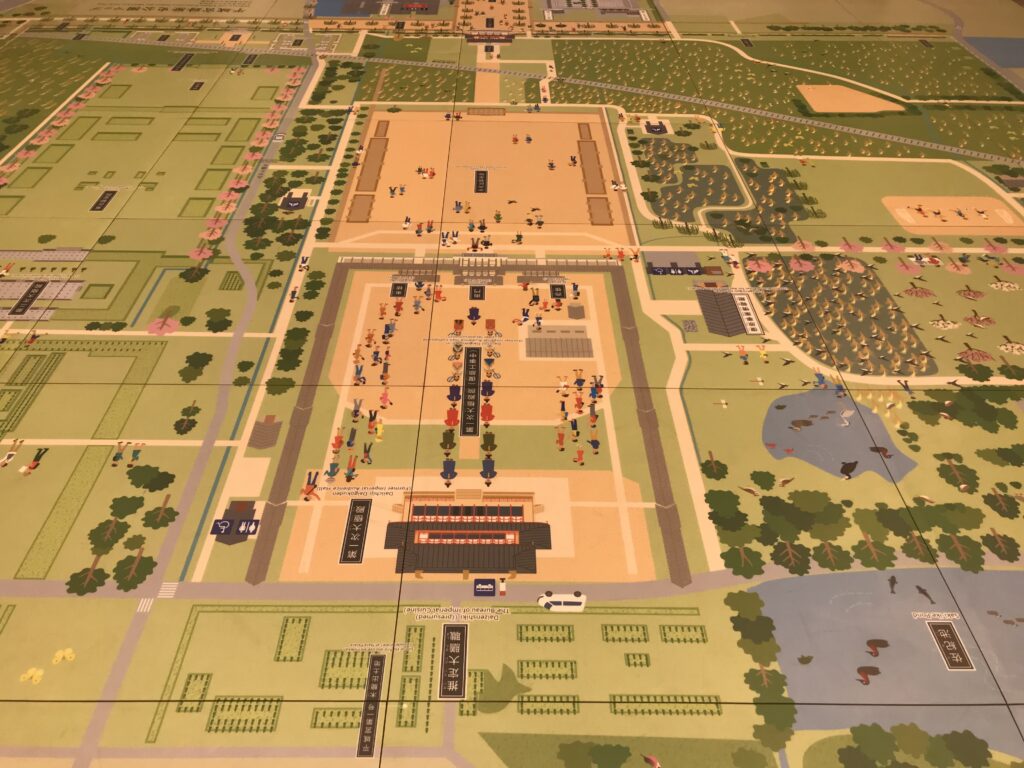
中に入って、足元に広がる平城京の地図を説明するところから始めます。復元された朱雀門や大極殿を見た後ですから、見学の皆さんは平城京の広さを頭の中で理解しやすいと思います。また、四神相応の展示がありますので、都を定める際に、どんな土地を何に基づいて探したのかを説明することができます。北は山、南は湖、西は道、東は川。
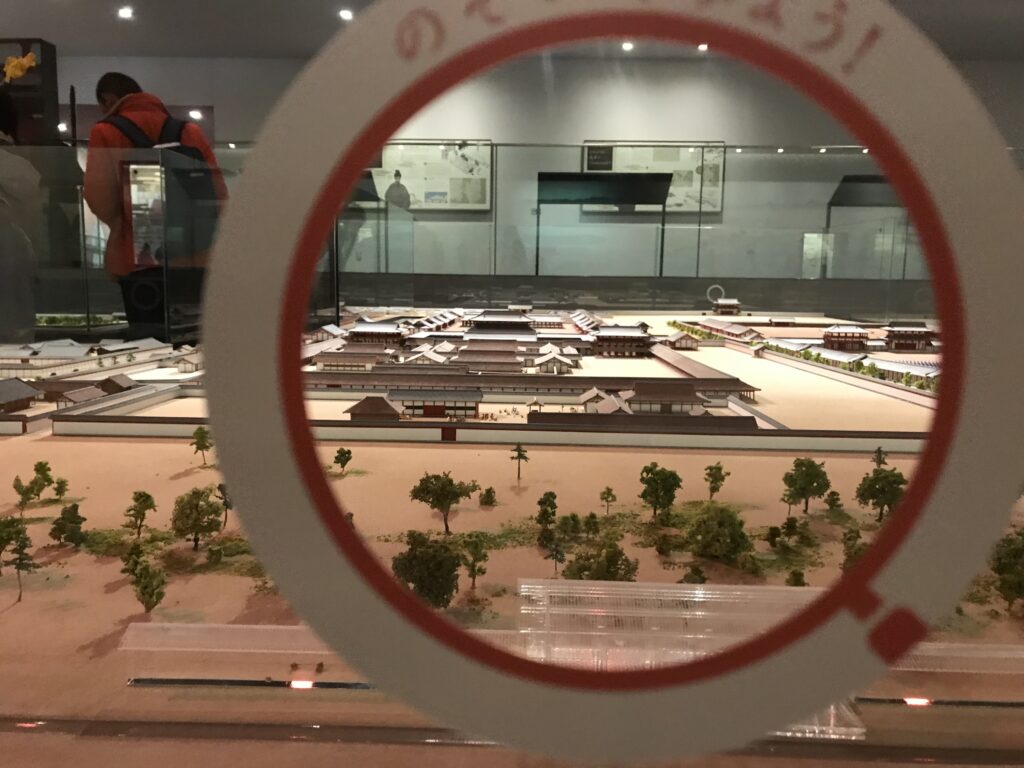
建築の組み物を近くで見られます
資料館の中を進んでいくと平城京のジオラマがあり、覗き口から見ると、当時の街が目の前にあるように感じます。当時の建築技法、特に中国から入ってきた技術だと思いますが、屋根の廂を支える構造を間近に見ることができます。
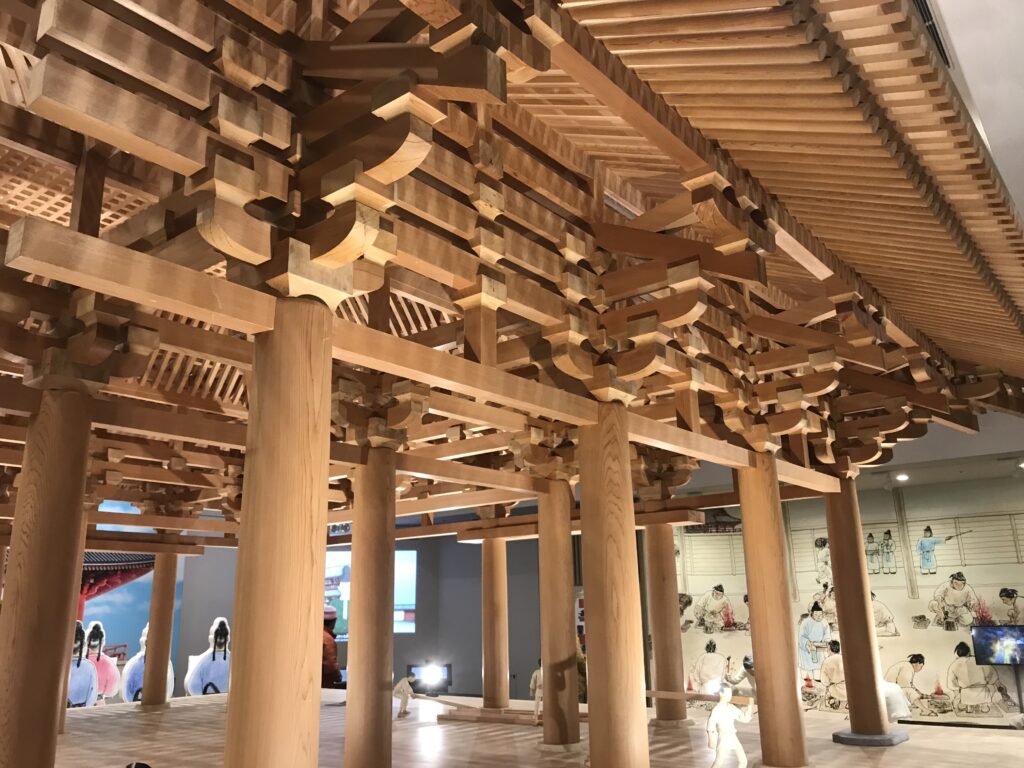
役人の位を表す衣装の色
奈良時代、役人の衣装で、その人の身分が示されていました。紫の色は染色するのに工程が長いため、高貴な人のみが付けられる色だったようです。ただし、天武天皇の頃は、柿色のような色を最も高貴な方々が着ていました。
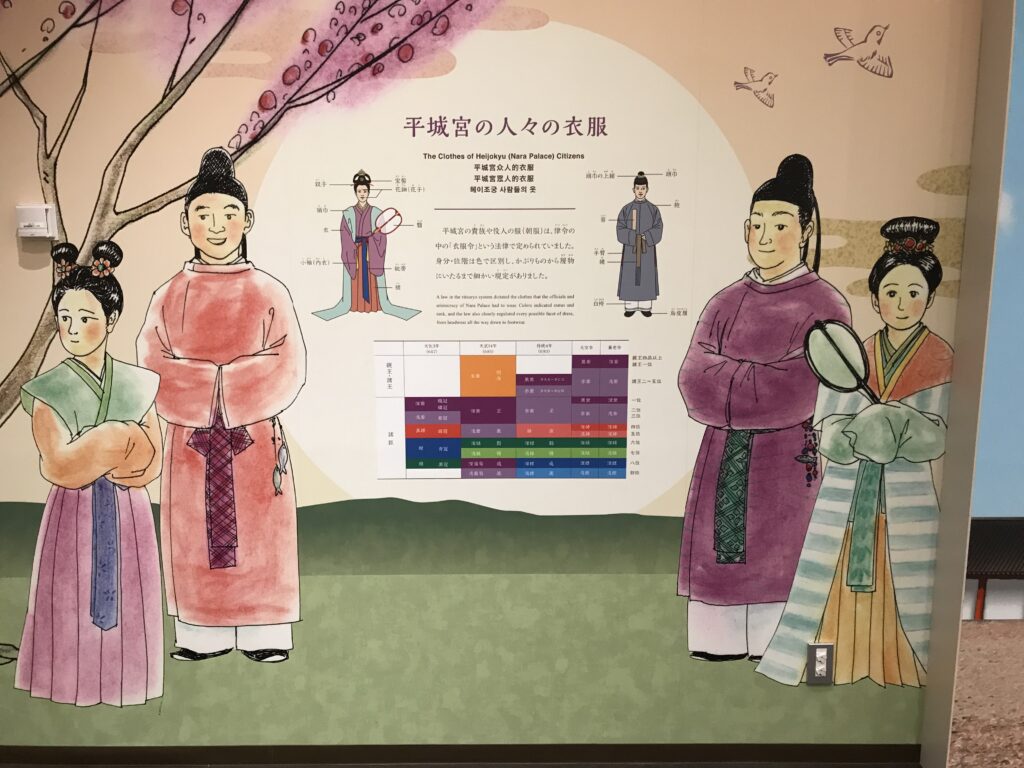
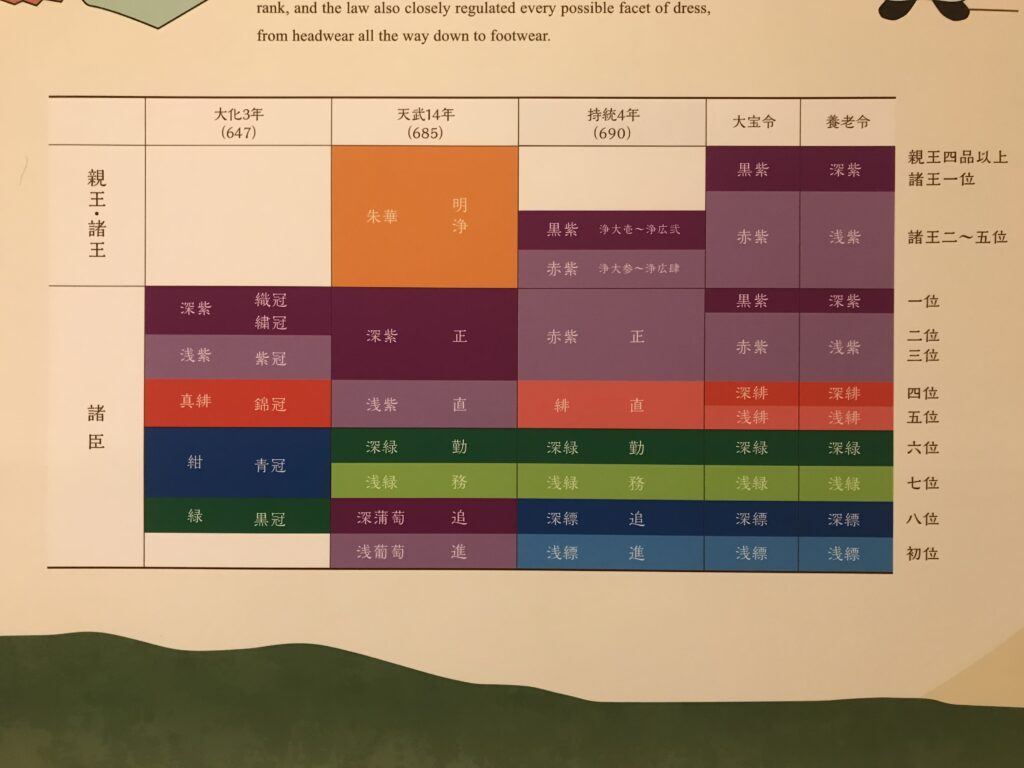
当時の人々が何を食べていたのか気になる所です。一般庶民についてはわかりませんが、偉い役人たちは写真のような食材を食べていたようです。都の奈良には、さまざまな食材が運び込まれていたのでしょう。現代から見ると質素ですが、当時としては贅沢な食事だったのかも知れません。ちなみに、この頃から既に出汁をとることはあったそうです。(完)
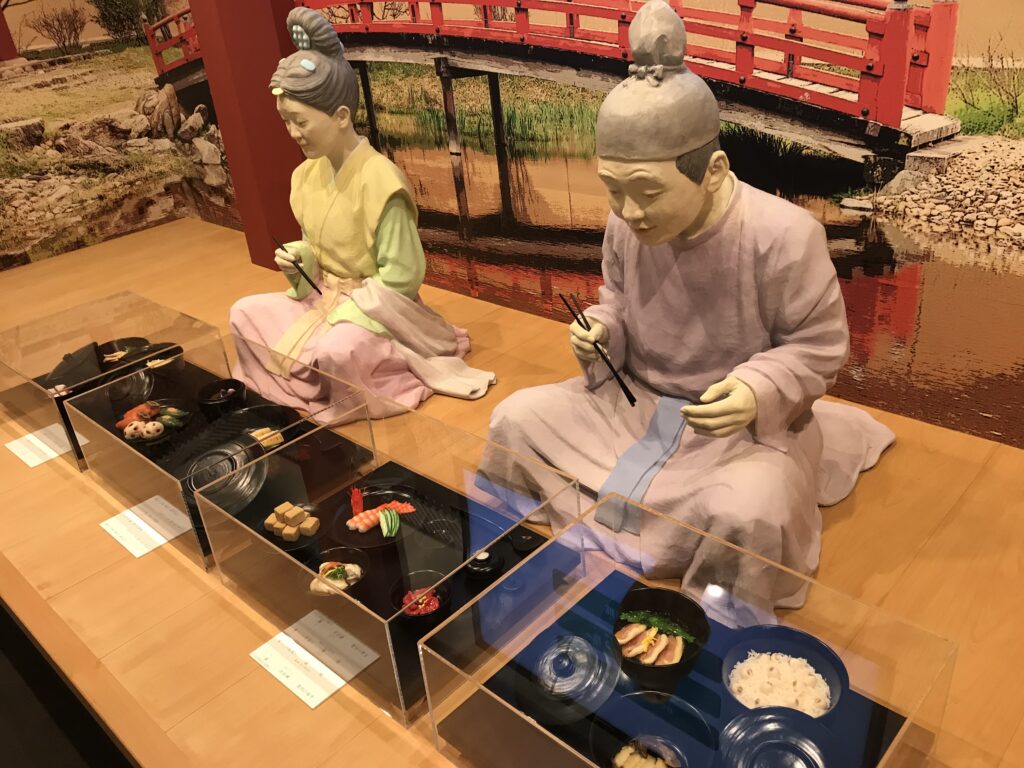
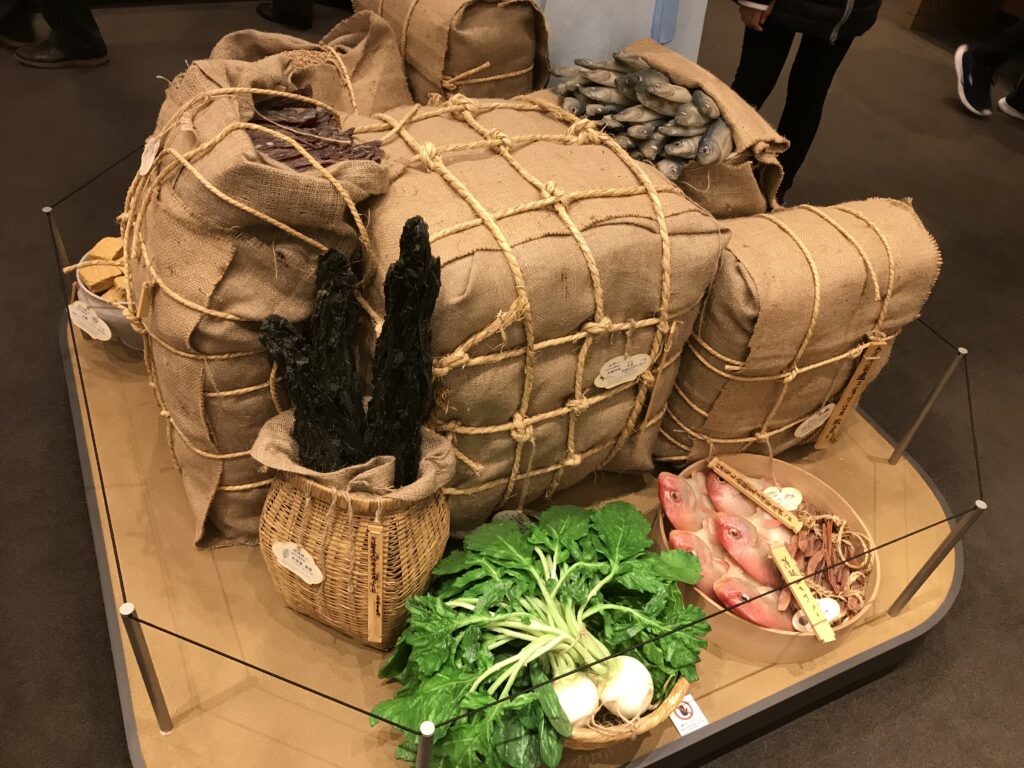
奈良時代の木簡を紹介している書籍
馬場基の「平城京に暮らす」に、出土した木簡から読み解いた当時の人々の暮らしについて解説されています。
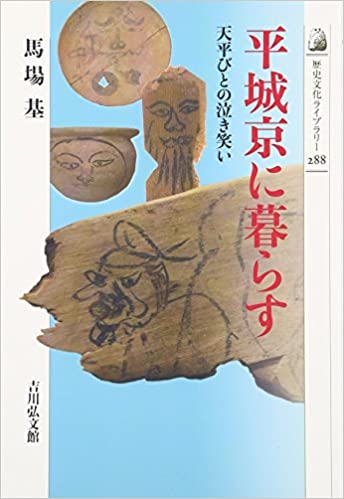
平城京に暮らす 天平びとの泣き笑い (歴史文化ライブラリー) [ 馬場基 ]
価格:1,980円
(2021/6/30 15:28時点)
感想(3件)
Heijo Palace Museum
A wide variety of exhibits can be viewed for free.
Whenever I visit the Heijo Palace site, I always take trainees from overseas to the Heijo Palace Museum. Thankfully, it’s free of charge, so it’s easy to include in the course, and we can explain the history and culture of ancient Japan using the abundant exhibits. Foreign language materials are also available, making it an easy facility for interpreter guides to use.
We go inside and start by explaining the map of Heijo-kyo that spreads out at our feet. After seeing the reconstructed Suzaku Gate and Daigoku-den, I think it will be easier for the visitors to understand the size of Heijo-kyo in their minds. There is also an exhibit on the Four Divine Providences, which will help explain what kind of land was searched for and based on what when the capital was defined. Mountains in the north, lakes in the south, roads in the west, and rivers in the east.
Get a closer look at the architectural assemblage.
As you walk through the museum, you will see a diorama of Heijo-kyo, and looking through the peephole, you will feel as if the city of that time is right in front of you. You can see up close the construction techniques of the time, especially the structure that supports the roof’s peak, which I think is a technique that came from China.
The color of the costume represents the rank of the official.
In the Nara period (710-794), the costumes of government officials indicated their status. Purple was a color that could only be worn by noble people because of the long process involved in dyeing it. However, during the time of Emperor Temmu, colors like persimmon were worn by the most noble people.
I am curious about what people ate back then. I don’t know about the common people, but it seems that the important officials ate foods like the ones in the picture. A wide variety of foodstuffs must have been brought into the capital city of Nara. It may look simple from today’s point of view, but it may have been a luxurious meal in those days. Incidentally, dashi (soup stock) was already being made at that time. (End)
Musée du Palais Heijo
Une grande variété d’expositions peuvent être vues gratuitement.
Chaque fois que je visite le site du palais Heijo, j’emmène toujours les stagiaires étrangers au musée du palais Heijo. Heureusement, c’est gratuit, donc facile à inclure dans le cours, et nous pouvons expliquer l’histoire et la culture du Japon ancien à l’aide des nombreuses expositions. Des documents en langues étrangères sont également disponibles, ce qui en fait une installation facile à utiliser pour les guides interprètes.
Nous entrons et commençons par expliquer la carte de Heijo-kyo qui s’étale à nos pieds. Après avoir vu la reconstitution de la porte Suzaku et du Daigoku-den, je pense qu’il sera plus facile pour les visiteurs de comprendre la taille de Heijo-kyo dans leur esprit. Il y a également une exposition sur les quatre providences divines, qui permet d’expliquer quel type de terrain a été recherché et sur quelle base lorsque la capitale a été définie. Des montagnes au nord, des lacs au sud, des routes à l’ouest et des rivières à l’est.
Regardez de plus près l’assemblage architectural.
En vous promenant dans le musée, vous verrez un diorama de Heijo-kyo, et en regardant par le judas, vous aurez l’impression que la ville de l’époque est juste devant vous. Vous pouvez voir de près les techniques de construction de l’époque, notamment la structure qui soutient le sommet du toit, qui, je pense, est une technique venue de Chine.
La couleur du costume représente le rang du fonctionnaire.
À l’époque Nara (710-794), les costumes des fonctionnaires indiquaient leur statut. Le violet était une couleur qui ne pouvait être portée que par des personnes nobles en raison du long processus de teinture qu’elle impliquait. Cependant, à l’époque de l’empereur Temmu, des couleurs comme le kaki étaient portées par les personnes les plus nobles.
Je suis curieux de savoir ce que les gens mangeaient à l’époque. Je ne sais pas ce qu’en pensaient les gens ordinaires, mais il semble que les fonctionnaires importants mangeaient des aliments comme ceux de la photo. Une grande variété de produits alimentaires a dû être apportée dans la capitale de Nara. Cela peut sembler simple du point de vue d’aujourd’hui, mais c’était peut-être un repas luxueux à l’époque. D’ailleurs, le dashi (bouillon de soupe) était déjà fabriqué à cette époque. (Fin)
